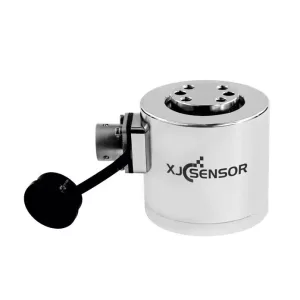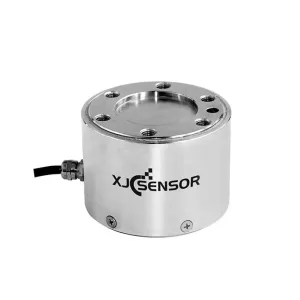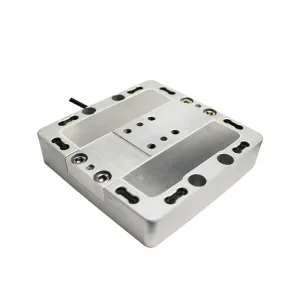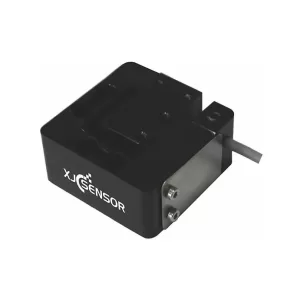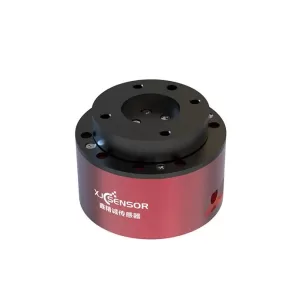3 axis load cell
Wholesale Customized 3 Axis Load Cell | XJCSENSOR
Welcome to XJCSENSOR, your trusted partner for wholesale customized 3 axis load cells. Our extensive experience and expertise in the sensor industry allow us to provide high-quality load cells tailored to meet your specific requirements. With a commitment to excellence, we aim to deliver superior products and exceptional service that exceed your expectations.
Why Choose Us:
Customization Expertise: We understand that every application is unique, and that’s why we specialize in providing customized solutions. Our team of experienced engineers will work closely with you to understand your needs and design load cells that precisely match your specifications.
Quality Assurance: At XJCSENSOR, quality is our top priority. Our load cells undergo rigorous testing and quality control measures throughout the manufacturing process. We ensure that each product meets the highest industry standards, guaranteeing accuracy, reliability, and durability.
Advanced Technology: We utilize state-of-the-art technology and cutting-edge techniques in our manufacturing processes. This enables us to offer load cells with advanced features such as high-resolution sensing elements, real-time data acquisition, compatibility with various interfaces, and more.
Competitive Pricing: As a wholesale supplier, we offer competitive pricing for our customized load cells without compromising on quality. By streamlining our production and maintaining efficient operations, we provide cost-effective solutions that help optimize your budget.
Our Advantages:
Extensive Product Range: Our portfolio includes a wide range of 3 axis load cells with varying load capacities and dimensions. Whether you require miniature load cells or heavy-duty options, we have the right solution to suit your application.
Customizable Features: Along with customizing load cell specifications, we also offer additional features like mounting options, communication protocols, and signal conditioning to ensure seamless integration into your systems.
Prompt Delivery: We understand the importance of timely delivery. With streamlined processes and a well-established supply chain, we strive to deliver your customized load cells promptly, ensuring that your project remains on schedule.
Our Factory Strength:
State-of-the-Art Facility: Our factory is equipped with modern machinery and equipment, allowing us to manufacture load cells with precision and efficiency. We adhere to strict quality control procedures to ensure consistent product performance.
Skilled Workforce: Our team comprises highly skilled professionals with extensive knowledge in sensor technology. Their expertise, combined with our commitment to continuous improvement, enables us to deliver superior products and reliable services.
Our After-Sales Support:
We value our customers’ satisfaction beyond the purchase of our products. That’s why we provide comprehensive after-sales support, including:
- Technical assistance and troubleshooting
- Warranty coverage for our load cells
- Timely response to inquiries and concerns
- Efficient spare parts supply
At XJCSENSOR, we are committed to delivering wholesale customized 3 axis load cells that meet your unique requirements. Partner with us to experience exceptional product quality, customization expertise, and reliable after-sales support. Contact us today to discuss your load cell needs or request a quote.
Frequently Asked Questions (FAQs) about 3 Axis Load Cell
A 3-axis load cell is a force measurement device that can measure forces in three orthogonal directions: X, Y, and Z axes. It provides accurate force measurements along these three axes, allowing for precise monitoring and analysis of forces acting on an object or structure in multiple directions.
A multi-axis load cell, also known as a multi-component load cell or a 6-axis load cell, is a force sensing device that can measure forces in multiple directions simultaneously. It typically consists of multiple sensing elements strategically placed to measure forces in all six degrees of freedom (three translational and three rotational axes). This allows for comprehensive force measurement and analysis, particularly in complex applications where forces act in different directions.
There are several types of load cells available, including:
- Strain Gauge Load Cells: These load cells use strain gauges attached to a metallic structure to measure deformation caused by applied forces.
- Hydraulic Load Cells: These load cells utilize hydraulic pressure to measure forces, often used in high-capacity applications.
- Pneumatic Load Cells: Pneumatic load cells employ air pressure changes to determine applied forces, commonly used in applications where electrical power is limited.
- Capacitive Load Cells: Capacitive load cells measure force based on changes in capacitance resulting from applied loads.
- Piezoelectric Load Cells: Piezoelectric load cells generate an electrical charge proportional to the applied force using piezoelectric materials.
In manufacturing, a load cell is a sensor used to measure forces in various processes such as material testing, quality control, assembly line monitoring, robotics, and more. It enables precise force measurement, ensuring that components or structures are subjected to the desired level of force or load.
There are various types of load cells available, each designed for specific applications. The common types include:
- Compression Load Cells
- Tension Load Cells
- Shear Beam Load Cells
- S-Beam Load Cells
- Single Point Load Cells
- Canister Load Cells
- Pancake Load Cells
- Clevis Pin Load Cells
Each type has its own unique design and usage characteristics, catering to different force measurement requirements.
To specify a load cell, consider the following parameters:
- Load Capacity: Determine the maximum force or load the load cell needs to measure.
- Sensitivity: Specify the sensitivity required for accurate measurements.
- Accuracy Class: Choose the appropriate accuracy class based on your application’s tolerance levels.
- Environmental Conditions: Consider the operating temperature range, humidity, and any harsh environmental factors.
- Mounting Requirements: Determine the necessary mounting method for proper integration into your system.
- Electrical Output: Decide on the electrical signal output (analog or digital) compatible with your data acquisition system.
Calibrating a strain gauge load cell involves applying known forces to the load cell and comparing the output readings to the expected values. This can be done using calibration weights or force standards, along with a suitable calibration setup. The process typically includes adjusting the load cell’s signal conditioning circuitry to provide accurate and reliable force measurements. Calibration should be performed by trained personnel using appropriate equipment and following established procedures.
Please note that specific calibration methods may vary depending on the load cell’s design and manufacturer’s instructions.
